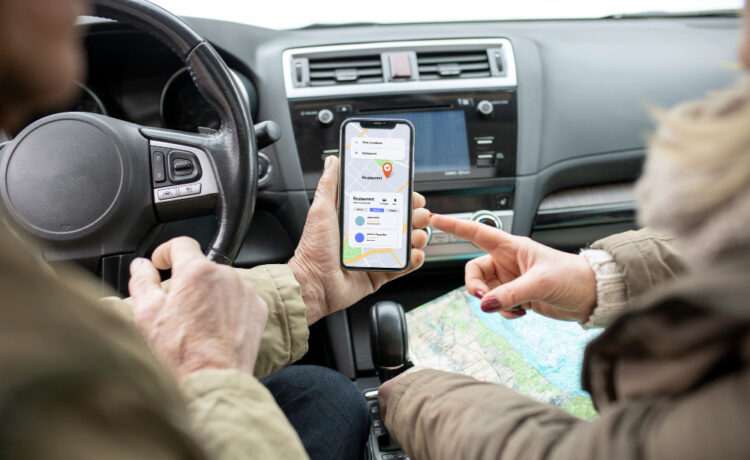Selecting a vehicle tracker is not a small decision. The device you fit will influence theft prevention, recovery speed, insurance outcomes and the quality of data your teams rely on every day. Many buyers start by comparing price and a short features list, yet the essential divide is between Thatcham trackers, which are rigorously tested and insurance recognised, and standard, uncertified devices. Understanding that divide helps you protect assets and reduce lifetime risk.
What Thatcham approval actually means
Thatcham Research developed security categories that set minimum performance criteria for hardware, installation and monitoring. Approval signals that a device has passed independent assessment for detection, resilience and response. It is not only about location accuracy. It is about how the unit behaves when tampered with, how quickly it raises meaningful alerts and how well the supporting processes move from an incident to a recovery.
How insurers view the two options
Insurers recognise Thatcham categories and often stipulate a specific level for higher risk vehicles. Meeting that requirement can reduce premiums or avoid referral delays. A standard tracker may provide a location feed, but without verified resilience or professional monitoring it offers less certainty at claim time. When underwriters weigh risk, test backed performance and reliable escalation carry more influence than checkbox features.
Security features that make a difference in practice
Approved devices typically include robust tamper detection, back up power and secure communications that resist casual interference. Many support driver identification so the platform can confirm who is in control. If the vehicle moves without an authorised ID, immediate alerts are raised. These features close the window of opportunity for thieves and give managers the clarity to act fast rather than sifting through vague notifications.
The role of professional installation
Quality fitting is a hidden but vital part of performance. Thatcham aligned installations ensure the device is concealed, wired correctly and positioned for reliable signal. Technicians also validate that the unit reports as expected before the vehicle returns to service. Cheaper self fit trackers can be easy to locate and defeat, and wiring faults can create gaps in reporting that you discover only when you need the data most.
Monitoring and escalation when minutes matter
When a theft or suspicious event occurs, response speed shapes the outcome. Many approved solutions connect to trained monitoring teams who verify context, contact nominated managers and coordinate with police when appropriate. This human in the loop approach turns an alert into a recovery plan. By contrast, basic devices often push app notifications that are easy to miss during busy shifts, which leaves valuable minutes on the table.
Day to day telematics and operational value
The best Thatcham approved trackers integrate with full telematics platforms. That means the same hardware that satisfies the insurer also supports productivity. Managers can review trips, coach driver behaviour, automate mileage claims and measure time on site, all alongside security events. A low cost tracker that sits outside your core system becomes another login to check and rarely delivers joined up insight.
Cost, value and the true total of ownership
Certified devices and professional fitting cost more at the start. Set that against the potential costs of a stolen vehicle, lost jobs, higher premiums and the hours your team spends dealing with fallout. For most fleets, preventing a single major incident easily offsets the price difference. Over a full life cycle, reliable alerts and smoother renewals usually make the approved route the economical choice.
Reliability and the burden of false alarms
False alarms drain attention and erode trust. Approved units are engineered to reduce noise and raise alerts that matter. Clean signal processing, secure power and tested tamper detection lead to fewer cry wolf moments and faster action when a real event occurs. Basic devices may fire generic movement alerts that become background noise, which can delay the response when a genuine threat appears.
Future readiness as threats and rules evolve
Criminal methods and insurer expectations change. Thatcham aligned solutions follow structured update programmes that adapt firmware, refine driver ID workflows and enhance recovery protocols. Commodity trackers have little incentive to keep pace. If you plan across a three to five year horizon, future readiness is not a luxury. It is a practical hedge against emerging attack patterns and shifting compliance demands.
Driver acceptance and workplace culture
Technology only delivers if people use it consistently. Clear driver identification, simple apps and transparent policies help teams understand what data is captured and how it will be used. Many approved systems provide fair scoring and incident context, which makes coaching constructive rather than punitive. Acceptance rises, data quality improves and everyone benefits from calmer conversations about safety and performance.
Integration with your wider tech stack
Fleet data should flow into job management, payroll and customer platforms. Approved trackers that expose well documented interfaces make this straightforward. The outcome is fewer manual entries, accurate proof of service and a single version of the truth for operations and finance. Devices that cannot integrate quickly become islands of information, which adds workload without adding value.
When a standard tracker still makes sense
There are scenarios where a basic device can be acceptable. Low risk assets, short term hire vehicles or pilot projects may justify a lighter approach. The key is to be honest about the trade off. You gain an initial saving, but you accept weaker tamper resilience, limited escalation and reduced leverage with insurers. For core fleet vehicles that carry service commitments, most operators prefer the additional certainty of approval.
How to decide for your fleet
Start with your risk profile. Consider vehicle value, operating areas, overnight parking, theft history and contractual obligations. Add the insurer’s position and any city compliance requirements you face. Then weigh the operational upside that comes from integrated telematics. If you need reliable recovery, smoother renewals and better day to day data, a Thatcham approved device is likely to be the better investment.
A practical next step
If you want insurance grade security in a system that also supports everyday fleet management, review a certified option that aligns with real world needs. You can see how driver identification, rapid alerts and professional escalation work together by visiting the dedicated page for the Thatcham tracker. It is a clear route to stronger protection, cleaner data and a calmer working day for managers and drivers alike.






